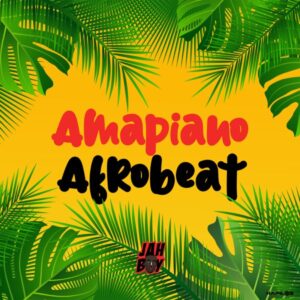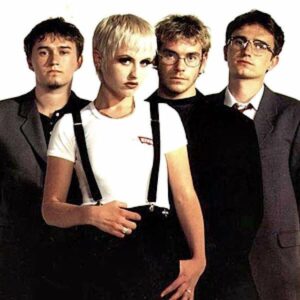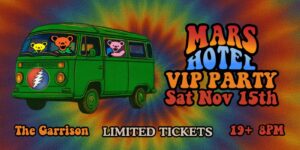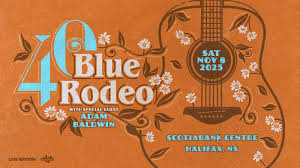
🎶 Top 10 Events in Toronto this Weekend (Nov 14–16, 2025)! ✨✨
Toronto turns up the heat this weekend with electrifying parties, powerhouse concerts, and immersive tribute nights! 🔥🎶
Dive into Afrobeats and Amapiano energy at Anotha Banga, rock out at the Toronto Emo Rave, and relive iconic hits with Cranberries and RHCP tribute experiences. 🎸💫 Catch emotional performances from Robyn Ottolini, global star Mustafa Sandal, and the legendary Stevie Nicks, or laugh the night away at A Show About Your Ex. 😂✨ Families can enjoy the magic of Blippi Live, while jam-band lovers groove at the Grateful Dead VIP Party.
From late-night dancing to soulful concerts and family fun, this weekend has something unforgettable for everyone — don’t miss the magic! 🌟
👉 Find full event details at Gozeeit.com 👀
🔥🎶 Anotha Banga – Afrobeats x Amapiano
📍 MIA Toronto, 244 Adelaide St W
Step into Toronto’s hottest Afrobeats and Amapiano night, where real rhythm, pure energy, and global vibes take over the dancefloor. With Shady Spyke, Adeola, Spinzo, and Mendosa spinning electric sets and hosts Jnyferk, Kofi Webbie, and Bairen hyping the crowd, this late-night party delivers nonstop heat until 4AM. 🔥💃
👉 Learn more.

🎸⚡️ Toronto Emo Rave w/ STVW & Alex Kade
📍 410 Sherbourne Street
Get ready for an explosive emo rave where pop-punk nostalgia meets hard-hitting EDM remixes. STVW brings his live “punk rave” experience with drums and guitar, while Alex Kade amps the chaos with emotional drops and alt-energy. Expect moshing, anthems, and a dancefloor that never stops moving. 🎶🔥
👉 Learn more.

🎤✨ Robyn Ottolini – The Way, Way Back Tour
📍 Lee’s Palace, Toronto
Robyn Ottolini returns home with a nostalgic, high-energy show packed with early-2000s vibes, new releases, and fan-favorite hits. Joined by Jessica Sevier and Laila, this intimate concert invites you to relive iconic memories while discovering fresh sounds. Pull out your baby tees—Toronto is going way, way back! 🌟🎶
👉 Learn more.

🤣🎭 A Show About Your Ex
📍 SoCap Comedy, 154 Danforth Ave
Laugh your heartbreak away as Toronto’s improv troupe $20 Sandwich transforms real audience stories into hilarious, unscripted comedy. Perfect for date nights, friend outings, or post-breakup joy, this show delivers sharp wit and nonstop entertainment inspired by tales of exes. Like therapy—only funnier. 💕😂
👉 Learn more.

🌹 The Cranberries Tribute Night – FREE
📍 The Cat’s Cradle, 1245 St. Clair Ave W
Immerse yourself in a heartfelt tribute to The Cranberries with cinematic visuals, powerful audio, rare footage, and the iconic songs that defined a generation. This free, family-friendly experience offers nostalgia, emotion, and community connection—all without a live band. A cozy, memorable evening for every fan. 🌹🎶
👉 Learn more.

🎸✨ VIP Party – A Grateful Dead Tribute w/ Mars Hotel
📍 The Garrison, 1197 Dundas St W
Join Mars Hotel for an exclusive jam-band tribute night celebrating the spirit of the Grateful Dead. With only 175 tickets available, fans will enjoy an intimate atmosphere filled with soulful guitar riffs, groovy rhythms, and nonstop dancing. A vibrant, feel-good evening for true Deadheads. 🌈🎵
👉 Learn more.

🇹🇷🎤 Mustafa Sandal Live in Toronto
📍 John W. H. Bassett Theatre, 255 Front Street W
Experience Turkish pop icon Mustafa Sandal live with his full orchestra for a night of electrifying performances and unforgettable hits. From “Araba” to “İsyankar,” enjoy a blend of passion, nostalgia, and world-class musicianship in an immersive concert setting. A rare opportunity for fans across the GTA. 🌟🎶
👉 Learn more.

🎶 Blue Rodeo with Adam Baldwin – Live in Hamilton
📍 FirstOntario Concert Hall, Hamilton
Celebrate an iconic night of Canadian music as Blue Rodeo brings their timeless harmonies, heartfelt lyrics, and beloved hits to Hamilton. Joined by Adam Baldwin, this concert promises emotional performances and musical storytelling that span decades. An unforgettable evening for fans new and old. 🎸💫
👉 Learn more.

🔥🎸 RHCP Tribute Night – FREE
📍 The Cat’s Cradle, 1245 St. Clair Ave W
Dive into a high-energy Red Hot Chili Peppers tribute with booming sound, immersive visuals, rare footage, and all your favorite hits. No cover, all ages, and nonstop vibes make this an electric night for every RHCP fan. Classic tracks, psychedelic visuals, and fun prizes await! 🎶🧨
👉 Learn more.

🎉🚜 Blippi Live – Hamilton
📍 FirstOntario Concert Hall, 1 Summers Ln
Bring the whole family for an exciting, interactive Blippi Live show packed with music, dancing, learning, and bright colors that spark curiosity. Kids will be fully engaged as Blippi brings everyday adventures to life on stage. Perfect for first-time showgoers and family nights out. 🌟👶
👉 Learn more.

🌙💫 Stevie Nicks Live in Toronto
📍 Scotiabank Arena
Experience the magic of Stevie Nicks live with iconic hits, powerful vocals, and emotional storytelling that has defined generations. Whether you’re a longtime fan or discovering her sound, this concert delivers timeless music, unforgettable atmosphere, and a legendary performance crafted just for Toronto. A historic night awaits. 🎶✨
👉 Learn more.






